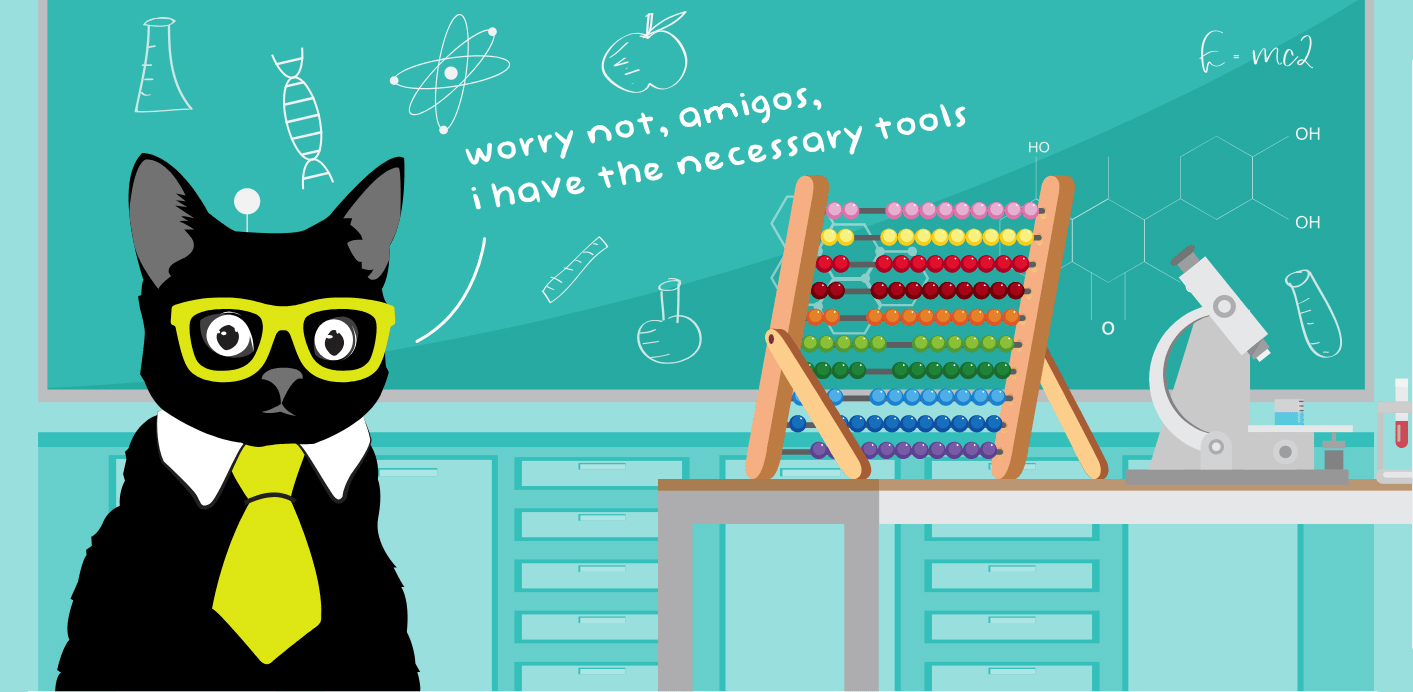If you’re not exactly sure how to improve customer service — and how to measure it in the first place — you’re about to find the answers below.
How to measure customer support quality
Most companies keep an eye on certain customer service metrics to see how well they’re doing. But if you’re specifically checking how high your support quality is, you need to look at a couple of different things:
- Customer surveys: Think CSAT, NPS, or CES. They tell you what customers think about your product, support, and company overall.
- Internal quality checks: This is where you measure your agents’ interactions and calculate the Internal Quality Score. IQS rates how well your agents are doing based on your quality standards.
Why bother with both? Well, customers might not know all the things you’re looking for in good customer service. Sometimes, when filling out surveys, they talk about other stuff like the product itself or features it’s missing.
On the other hand, analyzing your support interactions without taking into account how your customers feel might mislead you. Customer surveys help you stay on track toward your end goal: keeping customers satisfied.
Keep in mind that you can only improve what you measure. So, if you analyze your agents’ interactions and give feedback to them, your support team will become better at what they do and your support quality will improve.

How to improve customer service quality
If you’ve just measured your support quality and it leaves a lot to be desired, here’s more about improving customer service:
Define your customer service strategy and vision
Every company has its own idea of what’s most important for its business and customers. Some are all about giving personalized assistance to boost product engagement and upsell, while others prefer quick and to-the-point interactions.
Start by figuring out what you want your customer service to be like before diving into analyzing your support interactions. Basically, nail down what “quality” means for your team first.
Ask yourself these questions to figure out your support vision and goals:
- What do we do? Decide how much support you want to provide — whether it’s minimal support (like what Facebook offers, for example) or going the extra mile to ensure your support team improves customer loyalty and revenue.
- Whom do we serve? Determine if you’re helping all customers equally or focusing on paying or premium ones.
- How do we serve them? Choose your approach, whether it’s a self-help focus or aiming to provide excellent customer service.
Once you know what you want, it becomes easier to set achievable goals. After setting your support goals, check again if they align with your vision.
Here are some examples of customer service goals:
- Improve customer service quality by getting both IQS and CSAT above 90% by year-end.
- Respond to all tickets and keep First Response Times under 2 hours every month.
- Maintain consistent support levels via phone and live chat with IQS over 90% across channels.
- Upsell products in every interaction possible, scoring at least 80% in the “Upselling products” category in quality assurance reviews.
Customer service teams that set goals improve faster than those that don’t. Customer service goals will elevate your customer service experience. Read more about setting the right goals for your customer support team →
Give your customer service representatives the tools and training they need
If you want your customers to have great experiences, your agents need to be set up for success. This means:
- When choosing customer service software, consider your budget and the features you need. But also, make sure your agents like using it because that affects how well they interact with customers.
- Involve your support agents in decisions, not just about tools but everything. Don’t just give orders.
- Keep in touch with your team regularly. Provide resources through customer service training, team meetings, and one-on-one sessions with your agents.
- Keep an eye on motivation levels. Make sure your support team feels appreciated — use shout-out channels on Slack, have fun group activities, and give out swag packages or surprise gifts.
In simple terms, making things better for your agents and helping them continuously improve customer service skills, usually makes customers happier and boosts customer service overall.

Make sure your customer service team has the answers ready
First things first, good training is a must if you want your team to do well. If they don’t really know your products or services, they can’t help customers fast.
But training just covers the basics. Your support reps should be ready to handle all sorts of questions about features, functions, and situations on the spot. Even with proper training, it’s hard for all your customer service agents to have all this info at their fingertips.
That’s why a knowledge base is a must-have for any successful support team. Here’s what to think about when setting one up:
- Central repository: Put all the info your team needs in one place. Agents don’t have time to search through different knowledge bases during a chat.
- Information structure: Keep your data neat and easy to search. A clear structure saves time instead of trying to figure out how to navigate the knowledge base.
- Search functionality: Searching by keyword might take a bit longer, but it’s a game-changer with a huge knowledge base. Add a keyword-based search function to help agents out when they’re feeling a bit lost.
- Up-to-date information: Check and update the info regularly. Your agents are your best resource for keeping your internal documents in good shape. Let them point out old articles and suggest new ones.
Bonus tip: Mix real-life customer scenarios into your training and knowledge base. It helps agents use what they’ve learned in actual customer interactions.

Encourage your agents to respond quickly to customer questions
Being speedy is crucial, and how fast your team responds really affects the quality of service. Your customers want quick, helpful answers with a personal touch. Anything less might show up as negative in customer surveys.
Work on reducing your first response and average handle times:
- Break down the average response time for each customer service rep to spot those not hitting their targets. Figure out what’s slowing them down and suggest ways they can work more efficiently.
- If a group of agents is having trouble, think about having a training session. It’ll get everyone on the same page about when and how to respond to customer submissions and emphasize that response time is a metric you want to improve.
- To speed things up, consider adding faster customer service channels (like live chat) on your website to give customers more choices. Just be careful not to overextend by being on too many channels if your team can’t handle it.
- If you’re getting a lot of cases submitted outside of regular hours and on weekends, think about adjusting shifts. This is especially useful if you’re dealing with customers in different time zones.
- Encourage the use of canned responses, templates, and shortcuts. They help avoid coming up with custom responses to the same questions each time and also reduce the number of keystrokes needed to send a reply.
Have a feeling that your team is not fast enough? Before jumping to conclusions, make sure your customer service team has enough people, everyone is trained, and they have the right tools to get the job done. Only after confirming this should you start looking at how each individual is performing based on key indicators.
Find out who might be taking a bit more time to respond to customers and how well they handle support requests. The goal is to figure out what might be slowing them down and suggest ways to speed things up. However, if they’re not the fastest but provide great customer service, it could be that your team is dealing with a lot of support requests, or maybe your expectations for response speed are a bit too high.
![]()
Proactively tackle potential customer issues before they arise
Even if your product and service are top-notch, customer dissatisfaction can still happen. But there are ways to deal with these problems and provide proactive customer service before you start seeing a drop in support quality:
- Map out the customer journey: Identify all the possible challenges customers might face, and create a plan to improve customer satisfaction that prevents those hypothetical issues.
- Build a customer community: Create a space for your customers to connect and share experiences. Use this community to gain insights into how customers use your product and what they think about upcoming features.
- Review interactions with churned customers: Take a close look at the support interactions and notes from customers who have churned to prevent similar issues with other customers.
- Keep tabs on reviews and social media: Stay updated on what customers are saying on review sites and social media. You can even go a step further and identify areas where your competitors are falling short, turning it into an opportunity for your business.

Promote a culture of empathy in your organization
Empathy is probably the most important skill you should be looking for when hiring for customer service – and for good reason.
When customers feel heard and understood, they’re more likely to trust you. This, in turn, leads to better ratings on the customer satisfaction (CSAT) surveys you send out.
But for empathy to really work, it has to be a part of your company’s culture. Here are some tips to help make that happen:
- Hire people who love helping: Look for individuals who are passionate about helping and share the same mission and values as your company.
- Include empathy in onboarding: Make sure your onboarding process for new agents covers how you expect them to communicate with customers, including voice and tone, language, structure, and formatting.
- Focus on client conversations: Dedicate early conversations with new clients to understand their needs, workflows, and the customers they serve.
- Measure empathy: Create a separate quality assurance scorecard category to measure the empathy displayed by your team. You can give it more weight or mark it as a critical category, meaning a negative rating in this area could lead to the entire conversation being considered unsuccessful.
We use KHC (Kind, Honest, Confident) as our categories in the QA program. IQS gives us the space to learn how to help customers feel the love. CSAT just tells us if it’s working — and it does! This paradigm has powered several customer support teams from the high 70s for CSAT into the upper 90s.

Build a feedback loop to show you care
We’ve emphasized how crucial it is to let your customers know they’re being heard.
This involves not just collecting customer feedback through various methods but also having an efficient way to communicate it internally and represent the customer’s voice.
You can also systematically review support interactions to create a positive feedback loop, for example:
- Review a random sample of your support interactions (or let Zendesk QA identify and score the most relevant conversations automatically).
- Evaluate support conversations based on your internal quality standards — or check AutoQA scores if applicable.
- Give data-driven feedback to help improve the customer support team’s performance during coaching sessions.
- Repeat the process consistently.
There’s no better way to show your customers you’re listening than by integrating their requests into your product.
Now, granted, this won’t always be feasible. But even in such instances, you can still demonstrate that you’re paying attention by having one of your Product Managers directly explain why a specific feature, for instance, isn’t being developed.
Track customer service quality continuously
By reviewing all your customer interactions, you can spot and proactively address support quality issues, including agent burnout. Remember — leaving a customer service agent alone with their negative emotions is one of the worst solutions in this situation. Even the most hardened people can sometimes feel down about awkward conversations with customers and need someone to help overcome these bad days.
So you should always review the troublesome conversations and provide proper feedback to the affected agents. Customers do not know your quality standards, and you should not let them be the sole judges of the quality of your service. If a case receives a negative rating, analyze it from your perspective to understand if it was handled correctly according to your quality standards.
Don’t forget to balance those negative cases by looking at the conversations that received remarkably good scores from the customers. Find the interactions that everyone in your team could learn from and give the agents the praise they deserve.









![How to Build a Customer Service QA Scorecard [+ Template]](https://storage.googleapis.com/static_site_bucket/49ae7304-customer-service-scorecard-template-600x400.jpg)